Kilene Knitter is the Nutritionist for Giant Food Stores in Lancaster, York, and Chester Counties. She frequently offers programs to help consumers find healthy, yet affordable food options. I attended one of her Grocery Store Tours and here are a few things I learned:
Portion your plate
When building your plate, make sure half is filled with vegetables, a quarter is filled with starches and then the remaining quarter is filled with protein.
Eat a rainbow
Make sure to vary the foods you are eating. Include a rainbow of fresh fruits and vegetables. The different colors contain nutrients that are beneficial to our health. For example, the purple/blue color in blueberries and plums helps our eyesight.
Always check the reduced produced rack
Before adventuring through the produce section, be sure to check the reduced produce rack for deals. The fruit placed there is usually just imperfect and may not look as pretty as what you see in the rest of the section.
Don’t overload on carbs, switch them out instead
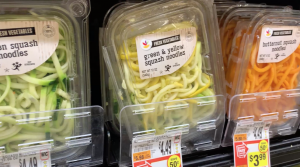
Carbohydrates are a good thing. They give us energy and make sure our body can keep going. Over-consuming carbohydrates can have negative effects, like weight gain. Kilene recommends switching out some carbs for vegetables. For example, instead of rice, use riced cauliflower. It takes on whatever flavor you put it with, so it can easily be incorporated into soups and casseroles. Another great option is zoodles, which are zucchinis and other squashes spiralized to look like spaghetti noodles. Make sure you don’t boil these though or else they will turn mushy. Kilene suggests sautéing the zoodles with some olive oil and pairing them with tomatoes, spinach, and a simple dressing. She swears by the Bolthouse line of dressings, because they don’t use a high amount of sugar, salt or processed oils.
Legume pastas, made from chickpeas, black beans and lentils, are another healthier option than normal pasta made from wheat.
Beware of “Reduced Sodium”
The recommended amount of sodium for the average person is 2,300 milligrams a day. Beware of products claiming to be “reduced sodium” because they are usually still high in sodium. Kilene recommends looking for “unsalted” or “low sodium.” Rather than adding salt to a dish, try adding citrus instead. A little lemon or lime juice will add a pop of flavor.
Pair your snacks
If you are eating a piece of fruit as a snack, pair it with some peanut butter or yogurt. It will keep you full longer. Here are some other combination suggestions:
High Energy Snacks under 200 Calories according to Giant
1 cup red bell pepper with ¼ cup of hummus (165 calories)
¾ cup fat-free Greek yogurt with ½ cup of blueberries (175 calories)
1 cup sliced cucumber with 2 tbsp sunflower seeds (120 calories)
1 medium orange with 12 almonds (160 calories)
½ cup of pineapple with ½ cup 2% cottage cheese (150 calories)
1 cup of grapes with 1 oz. cheddar cheese (175 calories)
10 baby carrots with ¼ cup guacamole (125 calories)
1 cup cherry tomatoes with 1 part-skim string cheese
It is recommended that you consume 30 grams of fiber each day to help with regularity and lowering cholesterol. Luckily, fiber can easily be added into meals, especially breakfast. Add two tablespoons of flaxseed meal to smoothies or yogurt for an easy uptick in your fiber intake for the day.
Chia seeds are another way to increase fiber consumption. Throw a serving of chia seeds into some milk and let it sit overnight. In the morning, add some fruit, nut butters, or cocoa and you have a delicious breakfast of chia pudding.
During the Grocery Store Tour, we got to sample some healthy snacks. My favorite was Hippeas, which are basically cheese puffs made from chickpeas. I tried the white cheddar and peanut butter flavors and they were so delicious I could probably eat a bag of either in one sitting. 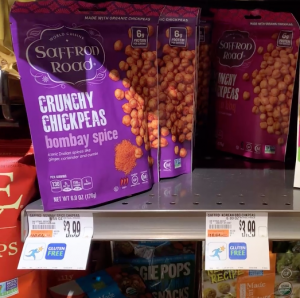
I also really enjoyed Saffron Road’s Korean BBQ Roasted Chickpeas; however, they were a little pricey. Kilene suggests making roasted chickpeas at home by scattering the beans on a pan with some olive oil, roasting them in the oven, and then tossing them in whatever seasoning you’d like.
I also got to sample Harvest Snaps and Somersaults Sunflower Seeds Crunchy Bites, which I would also recommend.
Limit sugar consumption
Women are recommended to limit their sugar consumption to 6 teaspoons (25 grams) a day, while men should limit their daily intake to 9 teaspoons (37.5 grams). No fair. Beware of breakfast cereals and yogurts with high levels of sugar. You could be close to reaching your sugar limit by breakfast alone.
Aim for lean animal protein
Try to stick to leaner meats like poultry, fish and beef or pork tenderloins. When buying ground beef, aim for 90% lean meat or higher. Kilene recommends eating two servings of seafood each week to get our recommended amount of omega-3. Fresh seafood can be expensive, but cans and packages of fish will work just as well.
Check your yogurt’s nutrition information 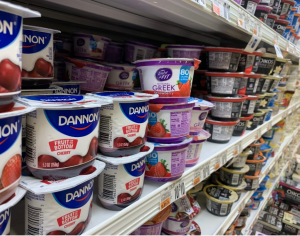
Yogurt is one of the most beneficial dairy products; it provides us with calcium, protein, and probiotics which help with gut health. A lot of yogurts have so much sugar added that it cancels out the health effects. Kilene recommends staying under 10 grams of sugar when picking out yogurts.
Also, make sure it says “Live and Active Cultures” somewhere on your yogurt or else you are not getting the probiotic benefits.
For a list of Kilene’s upcoming classes and tours, click here.


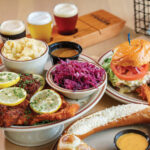



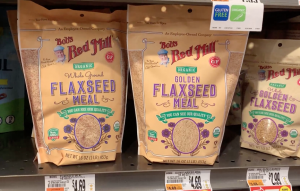
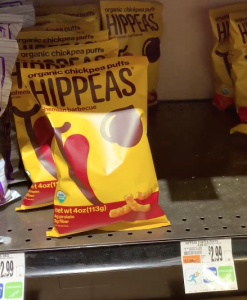
SHARE
PRINT